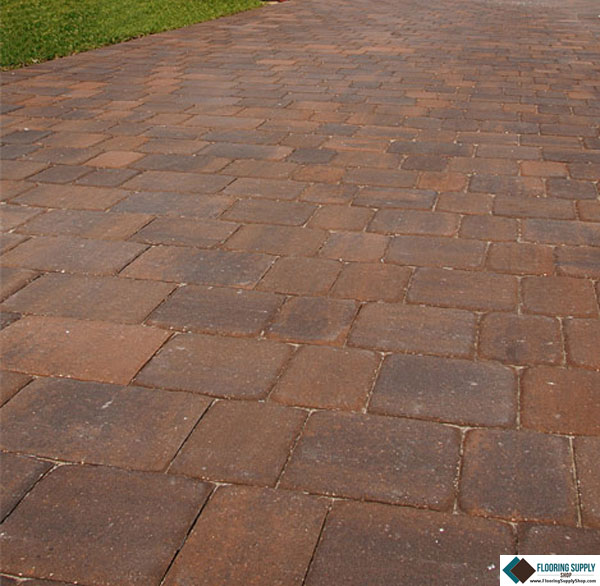
Concrete has come a long way as a material. Concrete used to be limited to sidewalks, but it has made its way into virtually every part of our homes. There are concrete floors, counters, patios, siding, and more.
Concrete is well-loved because it’s cost-effective and incredibly durable. However, despite its durability, it requires specialized care and maintenance to keep it in tip-top shape.
What are the best practices for cleaning and maintaining your home’s concrete surfaces? Here are some of the top tips to keep your concrete surfaces looking great for years to come.

Tip #1: Routine Cleaning is a Must
Whether we’re talking about your concrete kitchen counters or your backyard concrete patio – it’s critical to have a routine cleaning schedule in place. Dirt and grime can build up over time, and if it’s not washed regularly, it can cause structural damage to your concrete surfaces.
Tip #2: Only Use Certain Cleaners
It’s essential to use certain cleaners with your interior concrete surfaces. Your outdoor concrete can typically withstand a power washer, but your concrete counters are going to need a special kind of cleaner.
Indoor concrete usually has polishes, sealants, or finishes. Harsh chemical cleaners can break down these sealants, destroying the integrity of your concrete. Check the manufacturers’ recommendations for cleaning products. If you can’t find them, your best bet is to go with a non-abrasive cleaner, like dish soap and water.
Tip #3: Seal It
The best way to protect concrete from moisture damage and stains is to seal it. There’s no shortage of sealants on the market. Some sealers are better for outdoors, and some are better for indoors. Some have higher levels of protection and last for years, while others aren’t as strong and require regular reapplications.
The right sealant for your concrete surface depends on the location of your concrete and the amount of moisture exposure you expect it to have. While a sealant isn’t necessary for outdoor concrete, you’ll definitely need sealant for your countertops and indoor floors.

Tip #4: Avoid Moisture
While a sealant will protect your concrete from moisture damage, you still want to avoid unnecessary moisture exposure. Concrete is naturally extraordinarily porous. Like a sponge, concrete soaks up liquids, and over time, these liquids can cause cracks and reduce the concrete’s durability and longevity.
Tip #5: Repair Cracks and Damage Promptly
If your concrete surface begins to crack or show visible signs of wear or tear, it’s imperative to fix it right away. Small fixes with concrete are relatively cheap and simple to DIY. However, if you let the issue continue to fester, it will cause more significant and complex damage to your concrete.
There are several signs that your concrete is damaged, but here are few of them:
- Cracks – Moisture, temperature changes, and poor-quality concrete can cause concrete to crack.
- Blisters – When bubbles get stuck beneath a sealed surface
- Curling – When the edges of concrete begin to shrink, dry, and curl
- Scaling – When the surface of the concrete degrades
If you see any of these indicators or notice anything peculiar with your concrete, it’s essential to repair it right away.
Tip #6: Remove Stains Immediately
Stains happen. As with any surface, the sooner you clean the stain, the better your chances are of getting it up. With your sealed concrete, it will be much easier to clean these stains, because the sealant should protect the concrete long enough for you to address the spill. However, outdoor concrete tends to absorb spills and permanently stain.
The way to handle set-in stains depends on what stained the concrete in the first place. For instance, the difference between how to remove grease stains from concrete and how to remove rust stains are two completely different processes.
Your best bet when dealing with set-in stains on outdoor concrete is to search for your specific situation. Regardless of what stained the pavement, the quicker you remove it, the better off you’ll be.
Maintaining Concrete Surfaces is Simple
If you follow these six tips, you’ll have no problems maintaining your home’s concrete surfaces. Ultimately, it’s about being proactive. Keep a cleaning schedule going and stay on top of any issues that arise. As long as you do those things, you can enjoy all your concrete surfaces for years to come.
Skylar Ross is a contributor to Innovative Building Materials. He is a blogger and content writer for the residential and commercial flooring industry. Skylar is focused on helping fellow homeowners, contractors, and manufacturers discover materials and methods of installation that increase property value, improve durability, and discover innovative flooring options for their home or commercial space.
Copyright © 2020 FlooringSupplyShop.com

